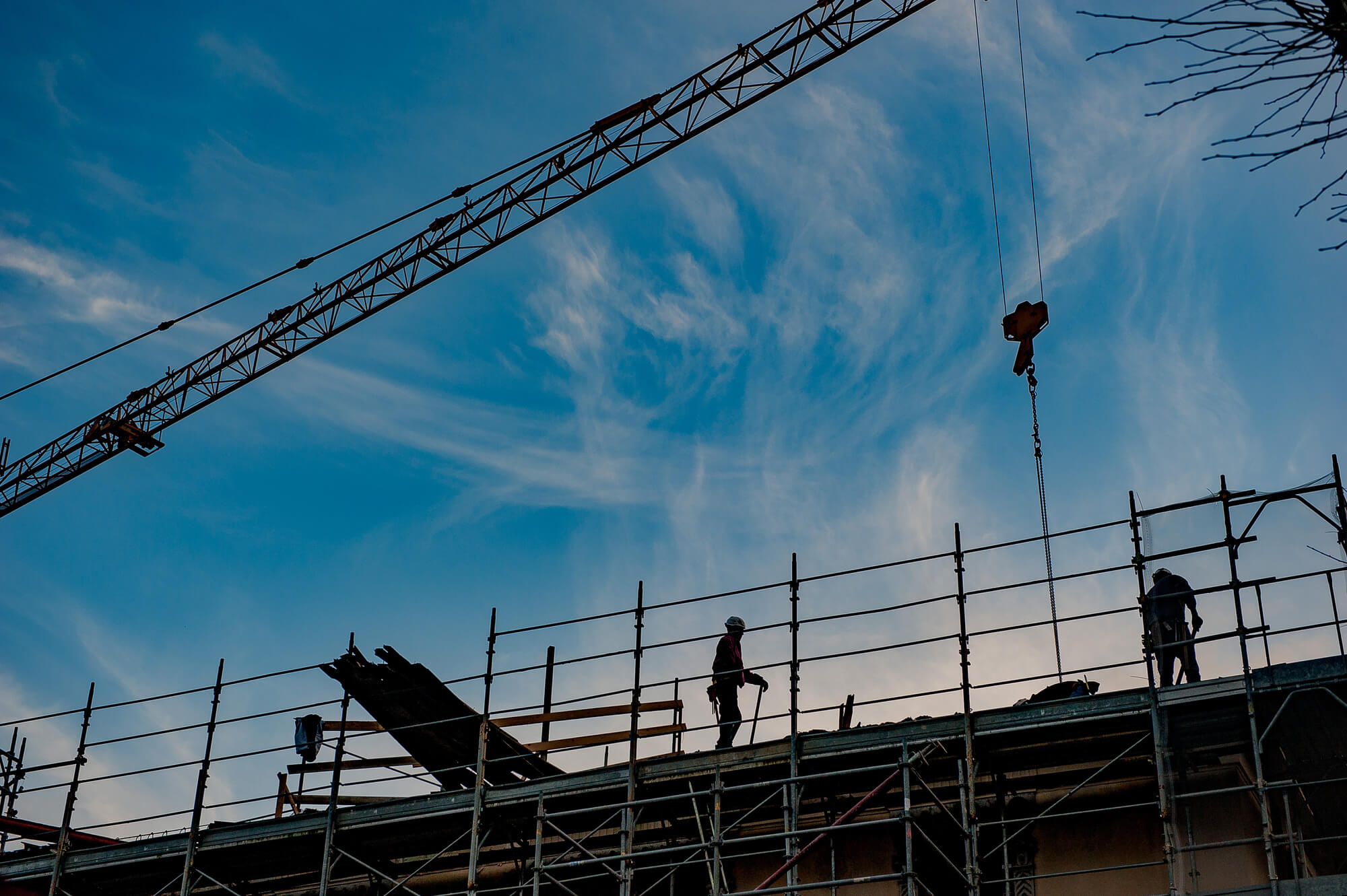Postwar reconstruction of Ukraine’s economy will be a herculean task (German Marshall Fund 2022). Existing institutions and funding instruments are inadequate to meet the scale and complexity of this endeavour. The extraordinary challenges created by Russia’s invasion must be met with extraordinary policies. In our chapter in the CEPR volume Rebuilding Ukraine, we offer suggestions for how to organize this process.
More articles about rebuilding:
An Agency to Coordinate the Reconstruction Efforts
Postwar Ukraine’s reconstruction will require huge resources. Estimates range from US$349 billion according to the World Bank to $1.1 trillion mentioned by the European Investment Bank. Given these financial requirements, funds will have to be raised from multiple sources, and donors will insist on mechanisms to ensure that this large amount of money is well spent.
To this end, we recommend creating a dedicated European Commission-led agency for the reconstruction of Ukraine. It makes sense for this agency to be European Commission led, since EU membership is the economic and political endgame for Ukraine, and reconstruction should proceed in a manner consistent with EU norms and law. The EU integration process can provide an anchor for Ukraine’s efforts.
The agency should have an office and staff on the ground in Ukraine. It should have a managing director experienced in dealing with the European Commission, and a management team which would consist of people from Ukraine, EU and other non-EU G7 countries, to avoid the impression that Ukrainian reconstruction is exclusively a European endeavour. It should have a Supervisory Board on which other donor governments, multilaterals and NGOs are represented.
While drawing on Commission expertise, the agency should be independent of the Commission and its regulations, enabling it to ramp up quickly. It should have a simple, streamlined structure similar to that of the Marshall Plan and Pakistan’s Earthquake Reconstruction and Rehabilitation Agency (World Bank 2014).
Funding Sources
Vast reconstruction needs call for raising funds from a broad range of sources. The reconstruction agency will have to mobilise funding from bilateral grants, development organisations (the World Bank, regional development banks and other development agencies), the IMF (for bridge loans and SDRs donated by other countries to Ukraine), EU pre-accession and structural funds, private donations, equity and other portfolio investment, and possibly seized Russian assets.
Grants rather than loans, wherever possible, is an important principle. Reliance on loans will increase the risk of a debt crisis. It is relevant in this connection that grants accounted for the vast majority of Marshall Plan disbursements.
Ukraine will also need debt relief (Obstfeld 2022). To ease access to international capital markets, Ukraine and its donors could issue bonds backed by collateral provided by the donors (analogous to the zero-coupon US Treasury bonds that backed Brady bonds).
Because adequate funding may be slow to materialise, there is a need for an arrangement similar to the International Finance Facility for Immunization, whereby donors pledge to provide a certain amount of money over a long period and the facility issues bonds against these future donations.
To be sure, reconstruction cannot rely on funds of governments and international organisations alone. The participation of private capital, for example in the form of inward foreign direct investment and public-private partnerships, is essential. Such partnerships will convey not only money but also technologies and managerial expertise.
A Master MDTF
Since there are multiple donors, it will be important to coordinate their efforts. We recommend utilizing a multi-donor trust fund, or MDTF, for this purpose. Since the 1990s, MDTFs have been widely used by the World Bank and others for channelling concessional finance to fragile states – including Ukraine itself after 2014. This structure pools diverse sources of finance. The typical MDTF has a deliberative body of local and multilateral members that sets policy priorities, a separate funding body of donor representatives and national authorities that authorises funding for specific projects, and a project review body that monitors those projects.
Benefits of this structure include flexibility and predictability of funding, visibility, alignment of donors in a common strategic approach, and reduction of information, coordination and administrative costs through the appointment of a single administrator (Scanteam 2007). Implementation can be complex, however. Dominance by donors of the deliberative and review bodies can weaken local political ownership. When the strategic and developmental priorities of donors and the recipient diverge, the donors are likely to win out. Barakat (2009) and others argue that the Afghanistan Reconstruction Trust Fund created in 2002 displayed many of these weaknesses. It will be important to avoid these pitfalls.
There already exist MDTFs, of course – too many of them! The World Bank operates a MDTF for Ukraine. To support critical services while the war continues. The Administrative Account opened by the IMF in early April 2022 is another de facto MDTF. The European Council agreed on 24–25 March to set up a Ukraine Solidarity Trust Fund. Intended to provide three types of support (humanitarian, liquidity and reconstruction), this MDTF is managed by the European Commission and uses EU budget guarantees to provide funds. During the Lugano Conference in July, the EIB offered to create a new EU–Ukraine Gateway Trust Fund to support both immediate and long-term investment in Ukraine’s reconstruction and the Ukraine National Recovery Plan, specifically the parts focusing on sustainable and smart infrastructure.
These efforts should be consolidated. The resulting master MDTF should allow for contributions from EU member states and other countries and partners, including existing MDTFs, ensuring efficient and effective fund management and effective coordination.
Coordinating Other Donors
Then there is the question of what projects the MDTF should fund. The priority list of projects should be generated by the Ukrainian government, which has local knowledge and must assume ownership of the reconstruction. The agency will need to develop, in conjunction with the Ukrainian government, high-quality data and digital systems for systematising, controlling and reporting on projects. Building on the experience of previous reconstruction efforts, the reconstruction agency could offer a menu of financeable projects to donors, investors and philanthropists. Projects would be pre-approved and coordinated to avoid waste and duplication. A blueprint for how this might work is in Table 1.
After creating a catalogue of funding opportunities, the agency would develop a searchable electronic system akin to a ‘public budget.’ Each project would have a detailed description, budget and listing of funds already secured by central or local governments. Public-private partnership projects would include cash flow forecasts and other documents needed for informed investment decisions. Private philanthropists would receive recognition (for example, they might have a building named after them). For-profit investment in Ukrainian enterprises and greenfield sites can be further encouraged by the adoption of supportive institutional reforms.
The Importance of Ownership
For investments to be undertaken efficiently and for reforms to stick, there must be Ukrainian ownership. Only in this case will reforms and investments be viewed as legitimate by the citizenry and, consequently, endure. Ukraine will utilise aid most effectively when the disposition of aid is seen as consistent with Ukraine’s own interests. The Marshall Plan’s architects similarly recognized the need for ownership on the part of aid recipients, while still proceeding on the basis of ‘trust but verify’ (Eichengreen 1995). Ownership should rest on broad domestic support achieved through inclusive public consultation with local authorities, civil society and business. To this end, it is important to solicit and build on information about how civil society views the future of Ukraine (e.g. Center for Economic Strategy 2022).
Conclusion
Ukraine cannot climb this mountain alone. Nor can Ukraine and the international community waste this chance. Ukraine has been creative in turning challenges into opportunities. The world should be equally creative in taking risks and searching for opportunities. The success of Ukrainian reconstruction will do much to shape the future of Europe and prospects for global security.
Table 1: Matching Donors with Projects
| Project owner →
Project donor/ investor ↓ |
Central government (approved by Agency) | Local governments (approved by Agency) | Private enterprises; communal enterprises (coordinated by Agency) |
| IFIs, EU: grants, technical assistance (TA) | Institutional development at the central level** | Institutional development at the local level** | Small grants; implementers of TA or reconstruction projects |
| IFIs, governments: grants, loans; TA | Large infrastructure (rails, energy, roads)** | Housing districts; heating plants, sewage systems, etc.** | Hospitals, schools, universities, etc.** |
| Private investors (PPP projects)* | Parts of infrastructure (ports, airports, parts of roads etc) | City infrastructure such as public transport | – |
| Private sector: philanthropists | – | Hospitals, schools, universities, etc. (these can bear their names) | Provision of training, expertise, small grants |
| Private investors*: direct for-profit investment | – | Greenfields/brownfields for enterprises (privileges only on local taxes can be allowed) | Buying a share in an enterprise or establishing a joint enterprise |
Notes: Grey cells show project developers and donors, other cells show examples of projects. Although we divide here projects by owners (central, local governments or private entities), other divisions are possible (for example, by size of a project). * for these projects, insurance of war risks will be needed. ** for these projects, the reconstruction agency should provide audit and reporting. For other projects, audit is ensured by investors.
This column was first published in VoxEU
References
Barakat, S (2009), “The failed promise of multi-donor trust funds: aid financing as an impediment to effective state-building in post-conflict contexts”, Policy Studies 30(2): 107-126.
Center for Economic Strategy (2022), “Ukraine after victory: Vision of Ukraine 2030”.
Eichengreen, B (ed.) (1995), Europe’s post-war recovery, Cambridge University Press.
German Marshall Fund (2022), Designing Ukraine’s Recovery in the Spirit of the Marshall Plan.
Obstfeld, M, A Gelpern, Y Gorodnichenko and S Hagan (2022), “Life or Debt in Ukraine”, Project Syndicate, 29 April.
Scanteam (2007), Review of Post-Crisis Multi-Donor Trust Funds, report commissioned by the World Bank, Norwegian Ministry of Foreign Affairs and the Norwegian Agency for Development Cooperation (Norad) in cooperation with the Canadian International Development Agency (CIDA), the Netherlands Ministry of Foreign Affairs and the UK Department for International Development (DFID).
World Bank (2014), Pakistan Earthquake 2005: The Case of Centralized Recovery Planning and Decentralized Implementation.
Attention
The authors do not work for, consult to, own shares in or receive funding from any company or organization that would benefit from this article, and have no relevant affiliations



